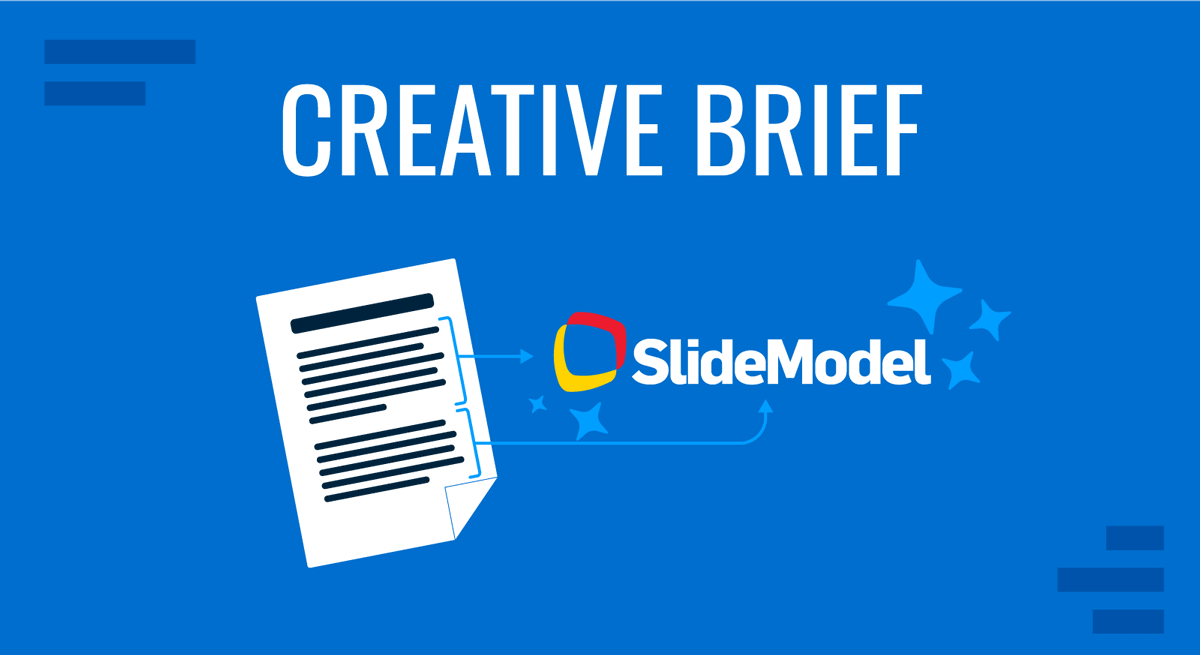
If you’ve ever done a project where a creative team is involved, probably from the get-go, the term creative brief became familiar to you quickly. Commonly, any project requiring some creative input will need this document to be a roadmap that minimizes mistakes and accelerates plans.
However, there are 2 moments when building the creative brief is quite tricky: first, aligning the team to define the requirements needs prudent project management. Second, afterward, presenting and following through with the creative brief can be challenging. If you are a project manager, read on as we discuss the key elements of a creative brief and how you can create one that your partners will love.
Table of Contents
- What Is a Creative Brief
- Parts of a Creative Brief
- How to Write a Creative Brief
- How to Present a Creative Brief
- Use of Templates for Creative Briefs
- Key Insights for a Creative Brief Presentation
- Final Words
What is a Creative Brief
Let’s begin by framing this term because it’s possible you and your team have never heard of it, and you have just logged off a Zoom call and are Googling it for the first time.
A creative brief summarizes a project’s brand background, the audience it’s meant to reach, and the campaign goals to be achieved. Of course, this is a textbook simplified response to the question, and we must not think that the creative brief is so essential and unimportant. On the contrary, regardless of how short it can be, this document will be the roadmap of guidelines and expectations for any project or campaign you and your team are launching.
The components of creative briefs are relatively similar, although the structure and specific detail may vary depending on the project, industry, and organization. They typically include the following.
- Company Background
- Deliverables
- Objectives and Goals
- Target Audience
- Messaging/ Call to Action
- Competitors
- Timeline and Budget
By itself, the creative brief should be the guiding light to all the teams involved and should provide enough information so that every person involved in the project can advance their tasks without having to over and over again come back to the source.
Who Writes the Creative Brief
If you seek the answer to this question, it’s not an easy one. Because actually, the creative brief is a complex summary of the complete project, whoever writes it should be the person with better access across the organization.
Let’s go a bit deeper into this. Generally, if you are working with an agency, a client manager will collect data from creative and executive teams and include background info from the client. Then will revise with any groups that manage budgets, and it’s all set to go. However, if you are working with an internal team, the stakeholders will be quite different and the challenges. Whoever is writing the brief should collaborate with the internal client and local creative teams to reach agreements. If they belong to the organization, this person can even be a project manager looking to understand the plan’s scope better.
Even though the creative brief tends to be quite structured, whoever is writing the document is a bit more lenient. What matters is that the person in charge can collect all the information necessary efficiently. Something essential to consider is that not necessarily who writes the creative brief will present or follow up.
Why is the Creative Brief Important
In recent years, the creative brief has taken a role in project guidelines and roadmaps. This is very relevant because it allows both sides -client and creative- to be aligned from the beginning.
The most important reason it’s necessary to create a brief is that it’s an industry standard, clients will be looking to take it to begin a project, and an agency team might need it to start as well.
Having a structured creative brief will allow for several improvements along the way, including:
Establishing Clear Direction for Teams
We can all agree that working with a boss that gives vague instructions is frustrating. When instructions are vague, it can lead to confusion, inefficiency, and a lack of confidence in your ability to fulfill the assigned tasks. The same could happen if you allow your team to work on a creative project without sharing a brief.

Regardless of how short it can be, a creative brief can give your team a clear direction on the steps to take during the project lifecycle. It ensures that everyone involved shares a common understanding of the project’s purpose and desired results and aligns their creative efforts toward achieving them.
Making Resource Allocation Efficient
The team can allocate resources more efficiently with a comprehensive understanding of the project’s needs. This includes assigning the right people with the appropriate skills to specific tasks and ensuring that resources are utilized effectively. The brief acts as a guide in determining the optimal distribution of time, budget, and manpower, minimizing waste, and maximizing productivity.
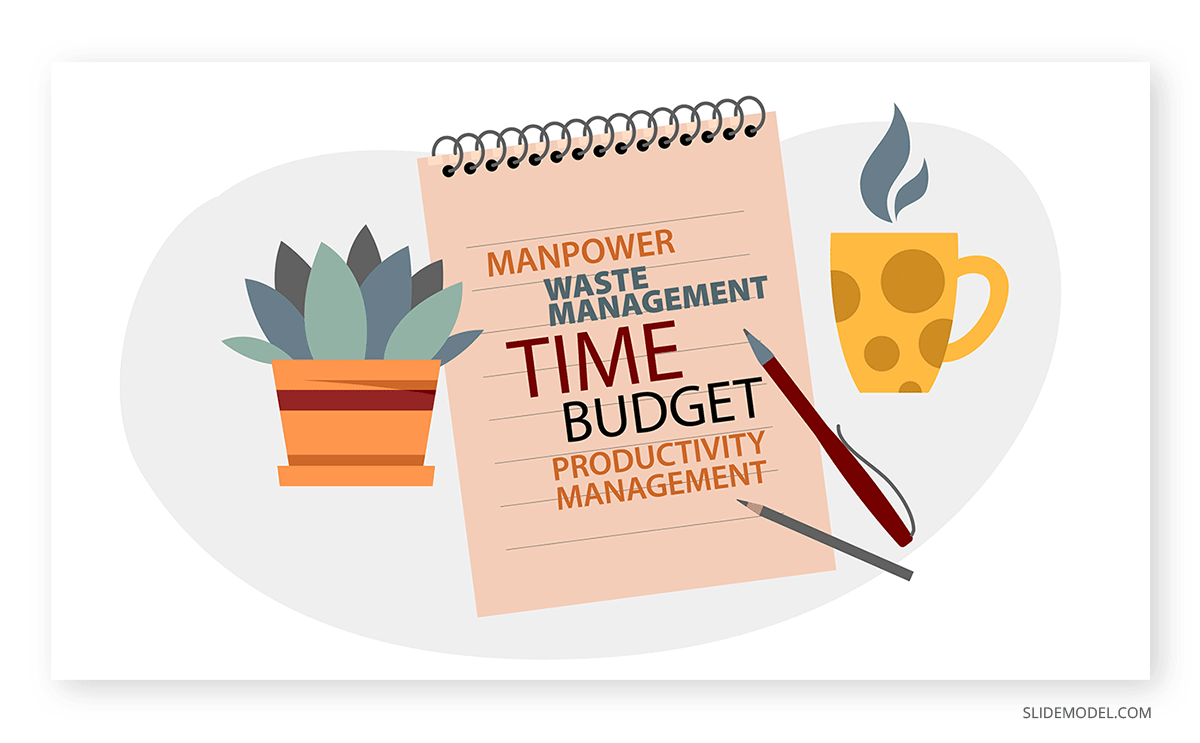
Furthermore, the brief serves as a reference point for evaluating resource availability and potential gaps. It helps identify any additional resources or support needed to execute the project successfully.
Let’s say a marketing team is tasked with creating a promotional campaign for a new product launch. Using the brief provided by the client or manager, they will need a graphic designer to create visual assets, a copywriter to craft compelling messaging, and a social media manager to execute the campaign across various platforms.
Saving Time and Cost
Revision is the Thanos of any creative work – it is inevitable. A revision or two is good, but you might lose the time and cost you can’t afford when your team has to do it too many times. You must establish a clear direction and expectations upfront through a creative brief.
The reduction in guesswork leads to several benefits. It and effort, saving it from trial and error or exploring different paths. It increases productivity as team members can proceed confidently, knowing they are working towards the intended outcome. It minimizes the risk of misunderstandings or misaligned creative outputs, as everyone works based on a shared understanding.
Maintaining Accountability
A creative brief sets a project’s key performance indicators (KPIs). KPIs are measurable goals or metrics that help evaluate the success and effectiveness of the creative work.
When goals are measurable, it becomes easier to hold oneself or team members accountable for their progress. Team members can refer to the brief throughout the project to stay on track and fulfill their obligations. It serves as a reference point to remind individuals of their tasks and the expected outcomes.

Higher Quality Final Product
A study published by the Design Society proves a correlation between a well-crafted brief and a creative output. The findings highlight that the quality of the content brief greatly affects the quality of results that teams produce. It provides a framework for the creative team to channel their talent and energy, ensuring they are aligned with the project’s goals and objectives.
So, whether you’re embarking on a marketing campaign, designing a product, or creating captivating content, investing time and effort in crafting a robust creative brief is an investment in success.
Parts of a Creative Brief
As we mentioned before, the creative brief is, as its name states, a short explanation of a creative project. However, to make sure it is efficient and provides all the info all the people involved will need, it’s important to make sure it has all of the following parts.
Company and Product Background
In this context, we need to frame the company’s background, meaning what the company does, what products will be involved in the campaign, and the overall vision. It is possible this campaign targets explicitly one product or vertical, so it’s essential to focus on that one specifically to avoid misunderstandings. Also, take some time to ad the main problem that this campaign or project will fix; this will also help all the stakeholders be on the same page.
Project Scope
This section will discuss the campaign’s expectations: is it a launch for a new project, is it an awareness campaign and is the company opening a new social media channel? Whatever the campaign will push forward, it must be stated in this document. This section is one of the most important ones, as it also includes the goals that must be completed in this campaign and the overall strategic structure.
Audience and Target
Including both demographic and psychographic aspects, it’s essential to ad all relevant information about the potential user or buyer. For this scenario, it’s always great to add an avatar or buyer persona that will clearly define who the campaign is for.
The “big idea”
Generally, this is what in the field they call the concept of the campaign. Here we will integrate critical messages that will allow the creative teams to execute on that idea. Also, it will provide a teaser to all the other teams to start getting familiar with the message going out to the public.
Voice of the brand
Every campaign might have a different voice is used, especially if the campaign to be put in place is exploring a new space of audiences or even a rebrand. However, the brief most explore the tone that the project will have and provide a clear messaging voice to the brand.
Competitors
The creative brief must explore briefly who and what the competition is. It’s crucial in this section to include any related challenges that might arise to be ready beforehand to act upon them.
Logistics
One of the most important sections of the brief is the logistical details because all the departments must be aligned. This section will include budgets and timeframes that need to be observed by all members of the team.
How to Write a Creative Brief
1. Provide the Company Background
One section of the creative brief should describe your company – what you do, your mission, your position in the marketplace, and possibly a brief company history. You may skip this section if you are working with an internal team. But if you outsource the services to an agency or work with external partners, providing a comprehensive description of your company becomes even more crucial.
This helps the agency or creative team get acquainted with your business and the overall context within which they will work. It allows them to align their work with your company’s objectives and deliver creative solutions that accurately represent your brand.
2. Describe the Project/ Work Scope
What do you want to accomplish with the project you are launching? In this section, you have to describe the deliverable you need, with a detailed list of requirements and relevant background information that may help the creative team understand the context and significance of the project. Our guide on Project Scope can give you guidance about the steps to follow.
For example, are you looking to develop a new website or redesign an existing one? Whatever the work will accomplish should be clearly stated in the document.
3. Share the “Big Idea”/ Objectives
Your team needs to know the “what is” and the “why’s” of the project. The “big idea” refers to the overarching objective or central concept you aim to achieve with the creative deliverables. It represents the core message or theme guiding the creative team’s work.
For example, if you launch a search ad campaign, your objective could be “Increase website conversion rate by 15% within the next three months.”
Remember, your objectives should be SMART (Specific, Measurable, Achievable, Relevant, and Time-Bound).
4. Identify the Audience
Personalization will be vital in developing a new product or launching a marketing campaign. When your team knows exactly who the receivers are of the final product, they can tailor their work to engage and carry meaning for that specific audience effectively.
Identifying the audience means understanding their demographics (quantifiable social categories like age), psychographics (interests, lifestyles, values), and pain points. From this information, you can create your customer persona so your team can visualize and humanize your audience.
5. Set the Message and Voice
Do you need a copy with an authoritative tone, or do you want to sound friendly? The creative brief should highlight the key messages that must be conveyed through the project and the tone you want to use. You may have brand guidelines to ensure they have a cohesive voice across different campaigns. However, you may need to adapt this when exploring new markets or touchpoints.
In this case, you need to go back to the type of audience you are targeting and adapt your messaging. Human beings make decisions based on emotions, and creating an emotional connection with your target market can significantly impact their response to your message. By tailoring your messaging to address these aspects, you can effectively engage and resonate with your audience.
6. Identify the Competition
Competition is a valuable source of learning and experience. When you include a section that defines your competitors in the creative brief, your team gains a clear understanding of the landscape you are in and enables them to develop effective strategies that highlight your competitive advantages.
For example, if you’re launching a new mobile app, including information about similar apps in the creative brief allows the team to evaluate their features, design, and user experience. This analysis can guide the team in creating a unique value proposition and highlighting the app’s distinctive features to attract users.
7. Set the Timeline and Budget
For complex projects, it’s important to specify in the brief the time allotted and the delivery schedule of the output. A budget may also be included. With this information, the creative team can plan their logistics and better align their decision-making process with the client’s resources.
In an advertising project, for example, you can set milestones or significant stages within the project timeline that mark the progress of important deliverables. These milestones help track the project’s progress and ensure that it stays on track.
How to Present a Creative Brief
If your team comes from an agency background or presents it to an agency, a simplified document will do. You can go to any documents app and create a brief. However, being a standard for the creative industry, something more may be expected from it aesthetically. So we will provide some recommendations to step up your game, convince your team, and have an extremely professional presentation that will impress them all.
Creative Brief Formats
The Classic 1 Pager
Most old-school creative practitioners are used to a simplified document that can even be written by hand, where one-liners are used to talk about the product, ideas, and problems. However, modern problems need modern solutions, and now that advertising and marketing have become much more complex, a simple Word 1 pager may fall very short.
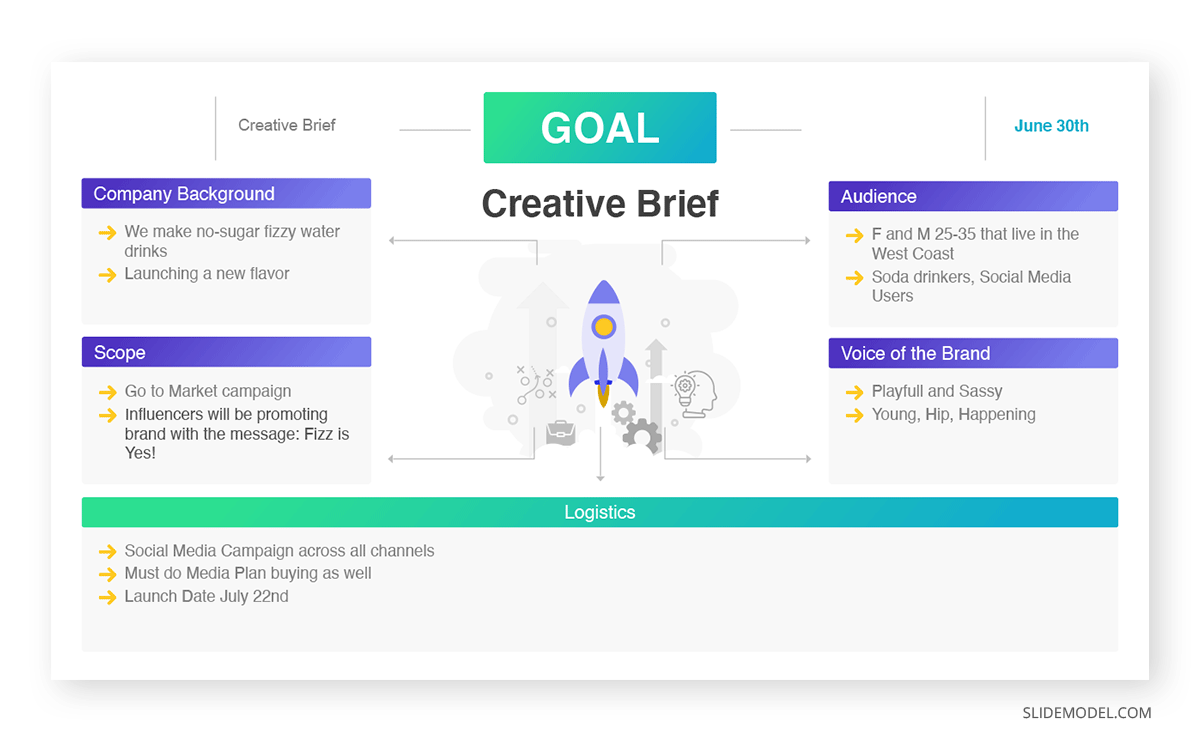
The one pager presentation can be enriched with additional information, like key metrics. Let’s say that you are preparing a creative brief for an advertising campaign, the slide can include key metrics such as CPM, CAC, or information about the marketing funnel. If you don’t know all the metrics, there are some useful tools like a CPM calculator that will help to calculate these values knowing one of the parameters. If you need this to be very portable, you can create a one Google Slide presentation and include all the info in there adding a bit of color and format.
The 2 Page Version
A bit more extensive than the 1 pager, 2 pages allows you to produce a longer document where you can even include design like infographics or charts that might be useful to the team. It’s ok to make the brief a little more unrestricted, as long as you clearly state all the required information for the campaign. You can even extend a tad more if you need to; make sure you maintain the brief essence.
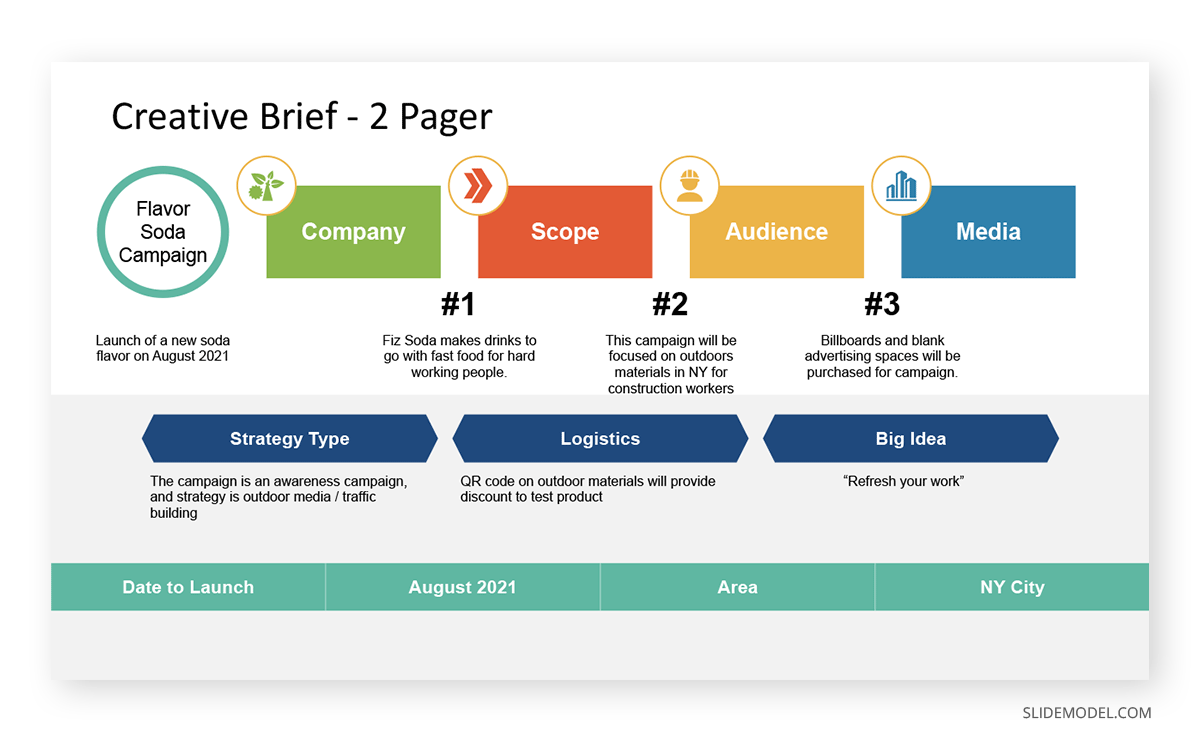
Alternative formats
PowerPoint Presentation
If you plan to collaborate with the rest of the team, go the extra mile and create something with more design elements. A great way to go is a simple PowerPoint presentation where you can add phrases or information about each slide in each of the slides one of the steps. A significant advantage of using a PowerPoint template is that you can also include any company (either your client’s or yours) style elements. If you currently don’t have any you’d like to use, don’t worry; we have your back.
To make sure your presentation has everything you need, it’s important that when you’re looking for a template, you plan out and outline all the information you will add to the brief. Make sure you don’t jam your slides with text and make good use of the white space. Include any brand data you need to include, and don’t be shy of having charts or visual references that will get the message across.

Pitch Deck
The creative brief in structure can be pretty similar to a pitch deck, so an exciting approach can be to use a pitch deck and substitute some elements.
The pitch deck usually begins with an introduction where you can include brand or company basics. Afterward, the next slide would generally have the problem, which is an excellent way to frame the project’s scope. Moving forward, you would see a solution or project which can be exchanged for the big idea. From then on, the pitch deck generally explores KPIs related to achievable goals, market sizes, and demographics, including buyer personas or targets. Therefore, you can easily turn a pitch deck template into a creative brief deck with a couple of tweaks.
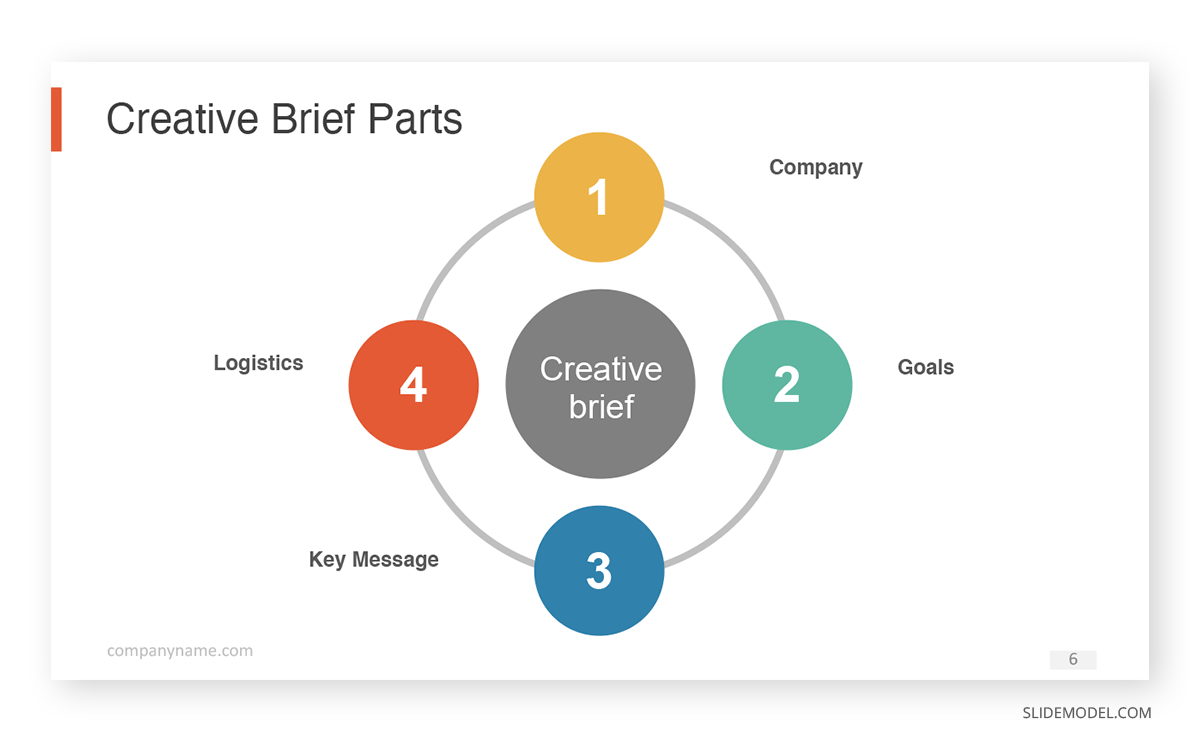
Trello to PowerPoint
If you want to supercharge your brief and earn some automation points, you can also create a Trello board where every column is one of the elements of the creative brief. From then on, you can create cards with the specifics, include tasks, and add timelines for better visibility. You can even make this brief-Trello into a collaborative tool so all your team can get ad information relevant to the project.
For the last step, you can use our tutorial on converting Trello Boards into PowerPoint presentations and sending this out to all the stakeholders as an easy to verify PDF that can evolve with the project.
Use of Templates for Creative Briefs
Using templates for creative briefs can be a helpful practice to streamline the process and save time. They provide a standardized structure for creative briefs, ensuring that all necessary information is in a consistent format that the creative team and the client can easily understand. Templates eliminate the need to start from scratch for every new project, allowing you to focus more on the content and specific details of the brief rather than spending time on formatting and structuring.
Key Insights for a Creative Brief Presentation
Generally, the creative brief will be discussed between the client and creative teams to ensure that it includes all the crucial points. However, the way this meeting goes depends on what both parties need. Traditionally, reviewing the creative brief is a regular sit-down session, and a simple document is shared between the parts. However, after 2020 we have gotten more and more used to virtual meetings and new ways of doing things.
Presenting the creative brief is an excellent opportunity to showcase your client in an innovative format all the work you will be doing from them based on your understanding. Depending on the media you chose to work your creative brief, 1-2 pagers, PowerPoint presentation, or even a bold Trello board, it is a great idea to take into account these tips.
Schedule the time
This way, you will know your client will be providing you with their full attention to revise and approve the brief; often, this is the document that kicks off a campaign or creative project.
Make an impactful presentation
In many cases, this meeting will be the first time you share the overall strategy or “big idea” with your client. Sometimes brief creative sessions include presenting slogans or brand claims that can be inspiring and emotional. Don’t underestimate this opportunity, and start building this excitement with your client.
Leave time for questions
If your client is not the creative type or has little experience with the process like this, they might have many questions. Ensure you don’t rush through the presentation and leave some space for interaction. Some of the client questions might come in handy afterward when developing the plan.
FAQs
Who writes the creative brief?
The creative brief is typically written by someone with access to all relevant project information, such as:
– Agency setting: A client manager gathers details from creative, executive, and budget teams.
– Internal team: A project manager or team lead collaborates with stakeholders and creative teams.
Why is a creative brief important?
A creative brief is essential because it:
– Aligns the client and creative teams from the start.
– Provides a clear direction, reducing confusion and revisions.
– Optimizes resource allocation and improves time and cost efficiency.
– Establishes accountability with measurable goals (KPIs).
– Enhances the quality of the final deliverable.
How do you present a creative brief?
To effectively present a creative brief:
– Choose a format: Options include one-pagers, detailed documents, PowerPoint presentations, or Trello boards.
– Schedule time: Ensure all stakeholders can focus on the presentation.
– Make it impactful: Showcase the strategy, goals, and creative ideas clearly and engagingly.
– Leave time for questions: Encourage interaction to address uncertainties and gain valuable feedback.
Can a creative brief evolve during a project?
Yes, while a creative brief provides the initial roadmap, it can adapt as project needs evolve. Updates should be documented and communicated to all stakeholders to ensure continued alignment.
What challenges might arise when creating a creative brief?
– Miscommunication between stakeholders.
– Lack of clarity in goals or objectives.
– Overlooking essential details, such as audience insights or competitor analysis.
– Resistance to following structured guidelines from creative teams.
Final Words
Having a creative brief is not only an industry standard for many but also a common language. The advantages of having and building a well-structured one can take time in the beginning but shave time off afterward.
Hopefully, with this guide and some extra inventive tips, you and your team will build a simple yet cohesive creative brief that will make your next project uber-successful.



